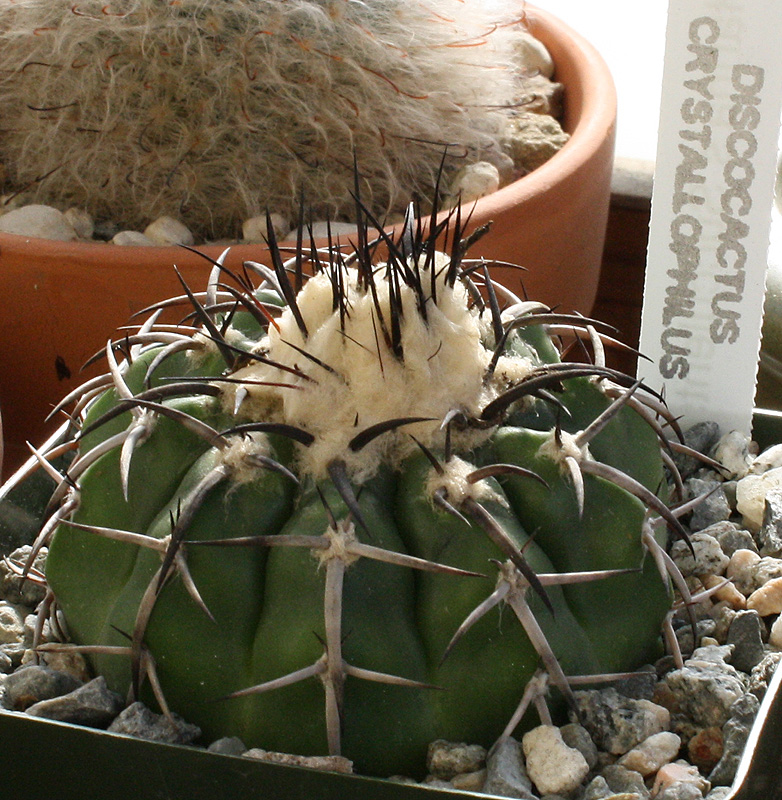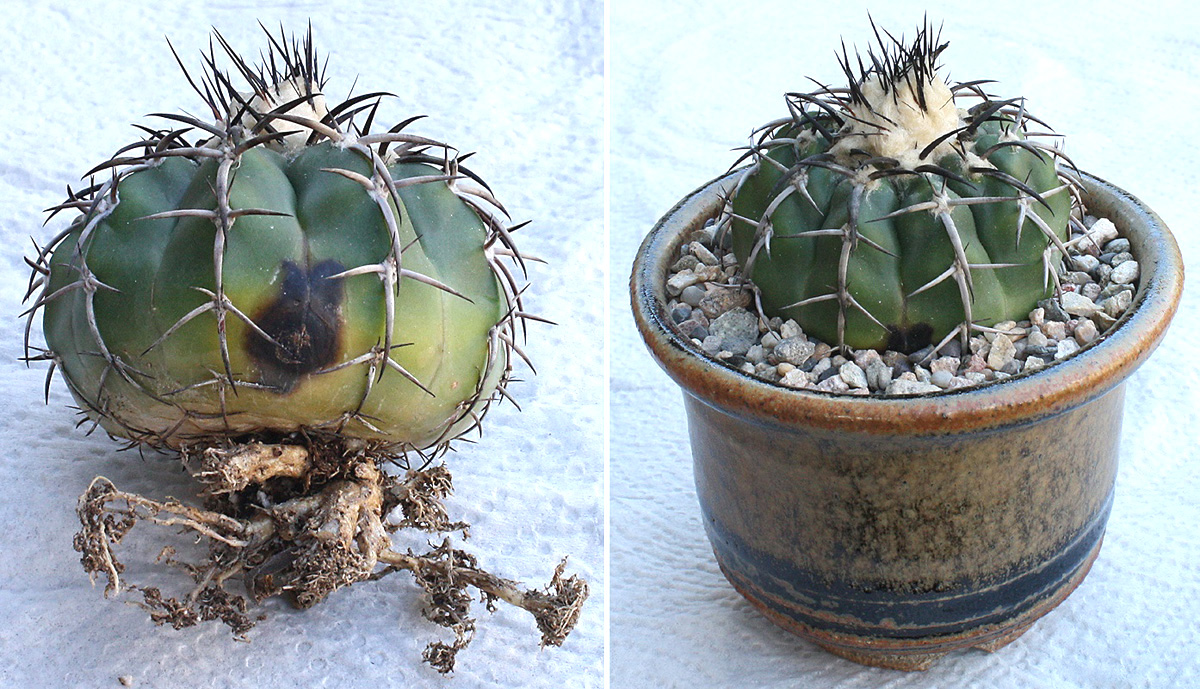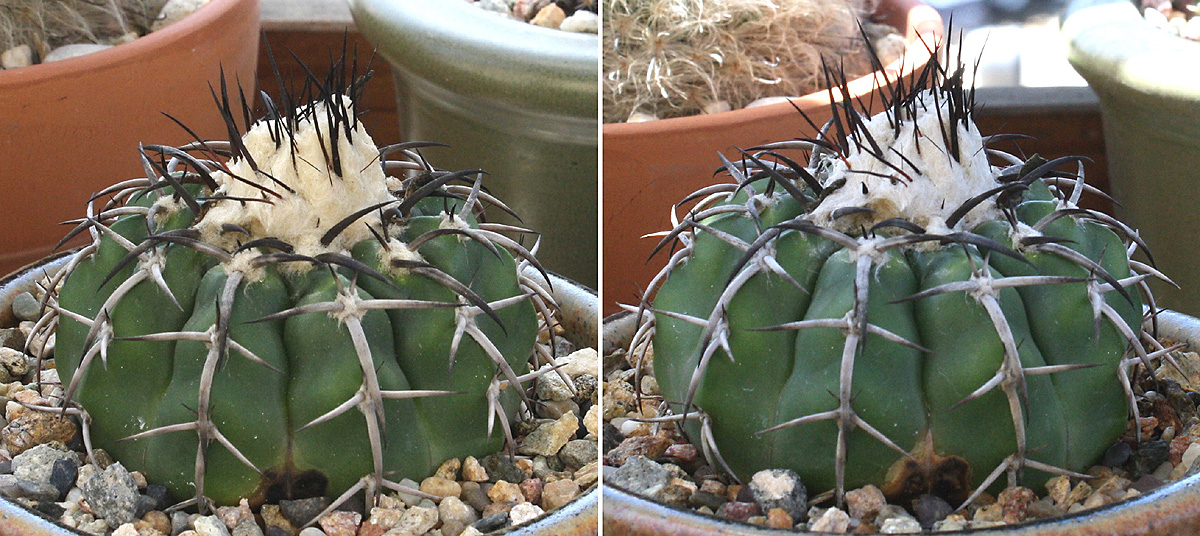I received a "welcome aboard" gift when I joined the Sunset Succulent Society in January, and here's what I selected from the donations table:

No way I was going to repot this lovely plant in winter, so I gave it occasional sips as one should do with Discocactus. I've been getting my Disco buenekeri and Melocactus matanzanus through this winter routine just fine -- the crystallophilus should be fine too, right? Well, I noticed a nasty black spot on the base about 2 weeks ago. Since spring is around the corner, now would be a good time to repot it and see what's going on underneath in the process:

Uh oh, necrosis. Not much in the way of roots either, and yellowish patches along the base are especially troubling. The grower lives in my general area, and unusually cold weather right after Christmas would've been enough to start the plant on a tailspin if he failed to keep it above 38 at night. I have a feeling this is what happened, and knowing how tricky Discos and Melos can be during wintertime, I don't think my latest acquisition will stand much of a chance for survival. But I'll try anyway.
Standard procedure whenever I get a potted cactus is -- toss out the grower's mix, clean the roots as thoroughly as possible, then soak them in 1% Hydrogen peroxide. But I went a little further this time by getting more of the plant down into the peroxide solution so the area affected by necrosis would also be soaked. After 15 minutes in the solution, I gently rinsed the crystallophilus in running water and let it dry. A few hours after that, repotting into fresh, dry mix:

As many of you already know, my mix of choice is a coarse pumice-DG aggregate. A few of my cacti need some soil in there as well, so the crystallophilus is now in an 80/20 mineral/soil mix. The buenekeri and Melo matanzanus love it, and hopefully the crystallophilus will respond to being in the same mix. With that said, it's a fair question to ask -- is the plant a goner already? I have a bad habit of giving up too easily sometimes, so I'll leave this as a rhetorical one. We'll come back and see what happens before the end of summer.
















